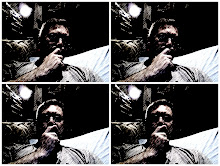 For many, all too many, there lingers a false perception of Emily Dickinson as a wall-flower poet - of quaintness and prettiness - of flowers and dainty things. Harold Bloom is far more accurate when he wrote in the introduction to the American Religious Poems (Library of America), "Her conceptual originality surpassed even theirs [John Milton and William Blake], and is dwarfed only by Shakespeare's, of all poets in the language." Despite the breadth for her work, she remains best known for poems like:
For many, all too many, there lingers a false perception of Emily Dickinson as a wall-flower poet - of quaintness and prettiness - of flowers and dainty things. Harold Bloom is far more accurate when he wrote in the introduction to the American Religious Poems (Library of America), "Her conceptual originality surpassed even theirs [John Milton and William Blake], and is dwarfed only by Shakespeare's, of all poets in the language." Despite the breadth for her work, she remains best known for poems like:I'm Nobody! Who are you?
Are you - Nobody - Too?
Then there's a pair of us!
Don't tell! they'd advertise - you know!
How dreary - to be - Somebody!
How public - like a Frog -
To tell one's name - the livelong June -
To an admiring Bog!
This is an amazing poem, unfortunately we read it so often in our basic education and it is so often represented as the exemplar Dickinson poem we forget its profundity. If we delve deeper into her amazing body of work we find poems of the soul and intellect that express the full range of human experience. I have regularly referred her poems to a niece of mine who fancies herself to be 'edgy'. She has dismissively brushed off this suggestion with a condescending 'her, I don't think so." Poets as different as Hart Crane, Paul Celan and Eugenio Montale have looked to her as a great, profound poet (both Celan and Montale translated her work). How anyone could not perceive her stature as a major poet is a failure of the American Educational / Cultural system, but also of the American religious / contemplative arena which responds with ambivalence to her religious and intellectual independence.
 Emily Dickinson is the American contemplative par excellence. I offer as proof of her depth the follow poem of darkness and understanding:
Emily Dickinson is the American contemplative par excellence. I offer as proof of her depth the follow poem of darkness and understanding:There is a pain - so utter -
It swallows substance up -
Then covers the Abyss with Trance -
So Memory can step
Around - across - upon it -
As one within a Swoon -
Goes safely - where an open eye -
Would drop Him - Bone by Bone.
If anyone can read this and think that she is anything other than the American poet of Contemplation, then they should stop reading poetry altogether. She should be read as many read St Teresa of Avila or St John of the Cross & as many read Auden, Eliot, Milton & Blake. Pick-up her work, stay with each poem, linger over it. I wish that each poem was printed only one per page to aid the lazy reader who might be tempted to fly through her work as if it were prose. She requires time, meditation and contemplation, and rewards the disciplined who find in her a poet of profound interiority.
Emily Dickinson, The Poems of Emily Dickinson: Reading Edition. Ed. R.W. Franklin (Belkap Press, 1999)
American Religious Poems: An Anthology. Ed. Harold Bloom (Library of American, 2006)
Alfred Habegger, My Wars Are Laid Away in Books: The Life of Emily Dickinson. (Random House, 2001). [Habegger has an excellent discussion of the discovered albumen photograph of the more mature Emily Dickinson.]





No comments:
Post a Comment